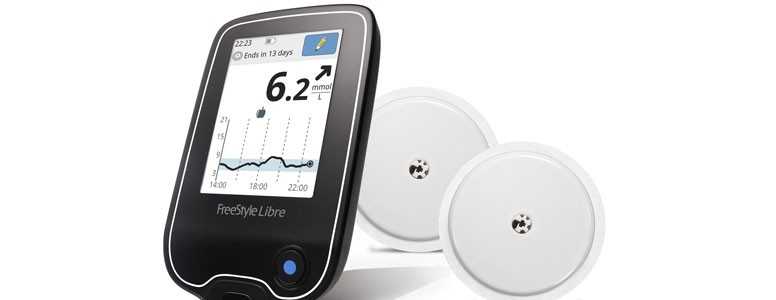Testing 16 times a day, without finger-pricks, improves diabetes control and reduces the risk of hypos according to real-world results from users of Abbott’s FreeStyle Libre system.
The FreeStyle Libre is flash glucose monitoring system which allows people to test their sugar levels by scanning a sensor on their arm rather than taking finger-prick blood glucose tests. The system is able to provide graphical trends of sugar levels which provides much more data than blood glucose tests.
Unlike continuous glucose monitors (CGMs), the Libre is not able to alert the user of high or low blood sugar until you actively scan. However, the trendline shows whether sugar levels are heading up or down, and how quickly, which helps people to see when they may be about to go low, giving a better chance to prevent hypoglycemia.
Reviewing trends can also help you to learn how sugar levels are behaving between meals and overnight, which can help people to more easily modify insulin treatment.
The findings, which were presented at the Advanced Technologies and Treatment for Diabetes (ATTD) congress in Paris, showed that, on average, users of the FreeStyle Libre were testing around 16 times per day. This is many more tests than is carried out by people using standard finger-prick blood glucose monitors.
Rather than coming from a research study, the data presented in Paris has come from real-world use of the FreeStyle Libre. The data was drawn from 50,831 devices which had used, altogether, 279,446 sensors. The number of sugar level measurements amounted 409 million.
The results showed that providing people with improved sugar level monitoring technology, in this case the FreeStyle Libre, allowed people with diabetes to improve their blood sugar control in a number of ways.
The figures showed that the people who took more measurements experienced:
Improved HbA1c levels: People scanning more saw estimated HbA1c levels decrease from 64 mmol/mol to 50 mmol/mol
Time spent in low blood sugar (under 3.9 mmol/) decreased by 15 per cent
Time spent in very-low blood sugar levels (under 2.5 mmol/l) decreased by 49 per cent
Time spent in high sugar levels (over 10 mmol/l) decreased from 10.5 hours per day to 5.9 hours
Time spent in range (3.9 to 10 mmol/l) increased 12 hours to 16.8 hours per day
Whilst there was no control group available, the results show clearly that those that are engaged more with the modern technology are able to achieve superior control.
The reduction in both estimated HbA1c and time spent in low and very-low blood sugar makes another strong argument for flash glucose monitoring, or continuous glucose monitoring, to be more widely available on the NHS, particularly for people with type 1 diabetes.
What's new on the forum? ⭐️
Get our free newsletters
Stay up to date with the latest news, research and breakthroughs.



